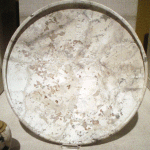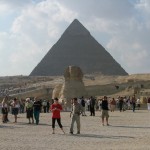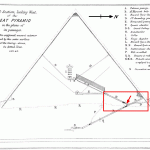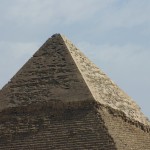
The Pyramids of Zawiyet el-Aryan
By Kate Phizackerley. Published in Egyptological Magazine, Articles on August 14th 2012 The Pyramids of Zawiyet el-Aryan Together with the mask of King Tutankhamun, the Sphinx and pyramids are probably the most readily recognised of ancient images, with countless images published of the Giza pyramids. Rock cut tombs were designed to be covert, but pyramids […] [more…]
Edition - February, 2012

Gantenbrink’s Door – Part II, the Second Robot Mission
The first part of this series tells how, in the early 1990s, modern science revealed the existence of something at the far end of the small shaft heading upwards and outwards from the north and south walls for the Queen’s Chamber in the Great Pyramid. These shafts had attracted little attention since the 19th century. Gantenbrink’s discovery, and explosive pictures, of a door at the end of the southern shaft changed the game. [more…]

The Granite Plugs of the Great Pyramid
The Great Pyramid on the Giza plateau at the apex of the Nile delta is one of the oldest and largest and yet perhaps the most enigmatic manmade structure in recorded history. Egyptologists have determined that it was commissioned by the pharaoh Khufu in the 4th Dynasty of the Old Kingdom to be his royal tomb. Figure 1 shows a vertical cross section indicating the main passages and chambers. However, within these passages and chambers are many elements of construction that are difficult to explain within the context of a royal tomb. This article focuses on one such enigma: the set of three massive granite blocks that plug the lower end of the Ascending Passage. [more…]
Edition - June, 2011
Gantenbrink’s Door – Part I: the Orginal Discovery
Although we now know that there is chamber at the end of the shafts in the Queen’s Chamber of the Great Pyramid, I still remember first hearing in the late 1990s that something had been found. The whole affair was shrouded in secrecy, back in the days when Dr. Hawass was the Director in charge of the Giza Plateau rather than Minister of State, the position he holds today. [more…]
 By
By 
